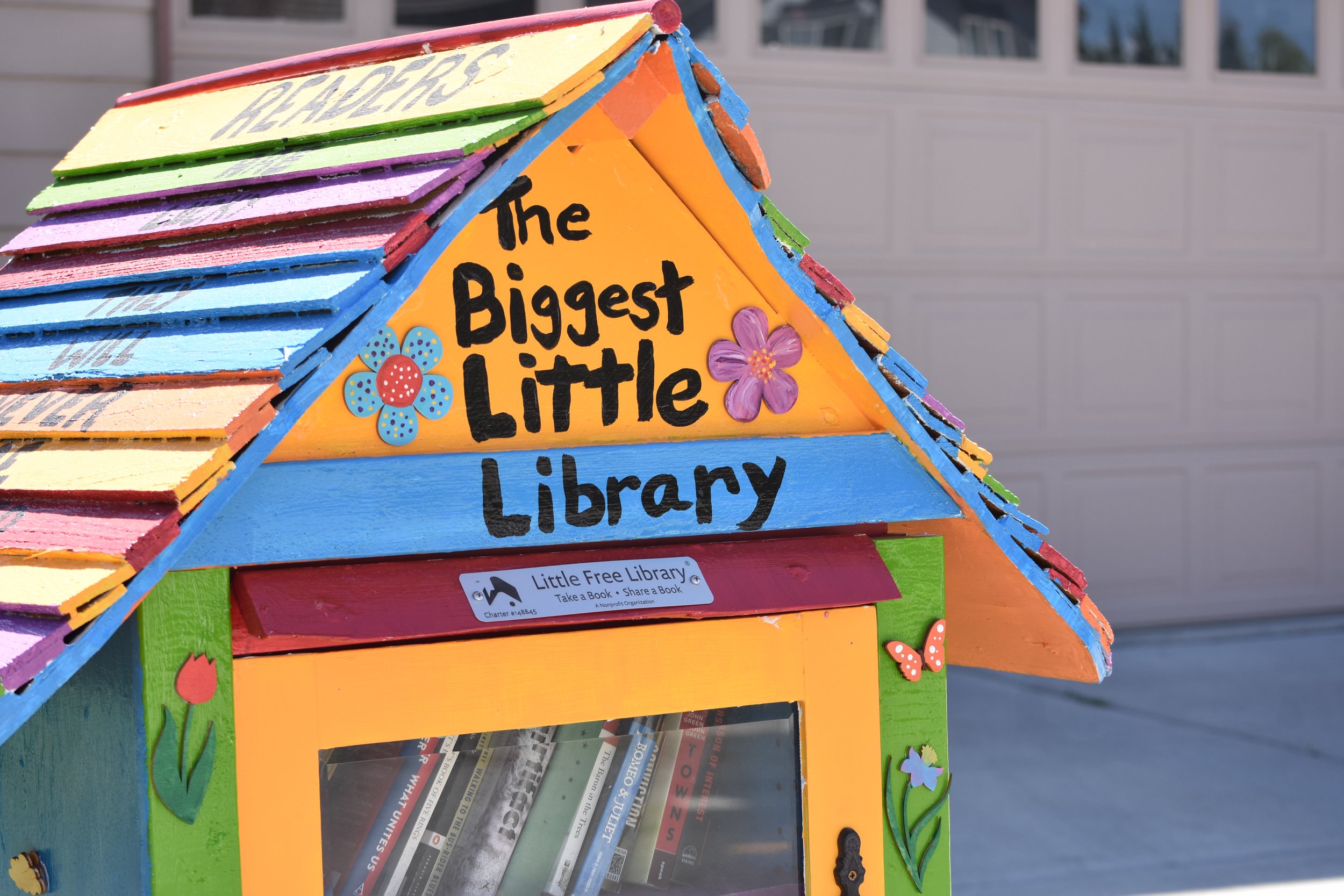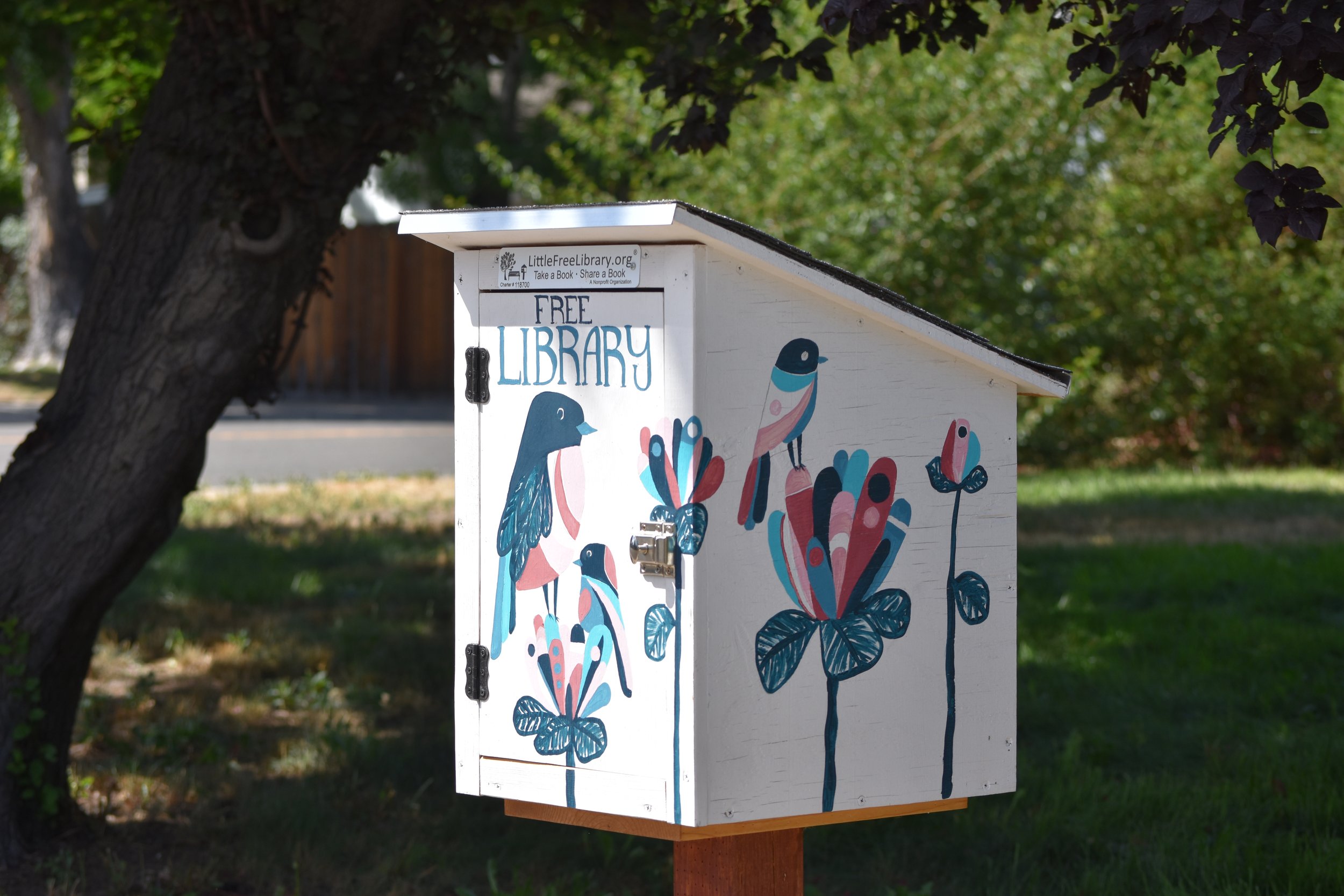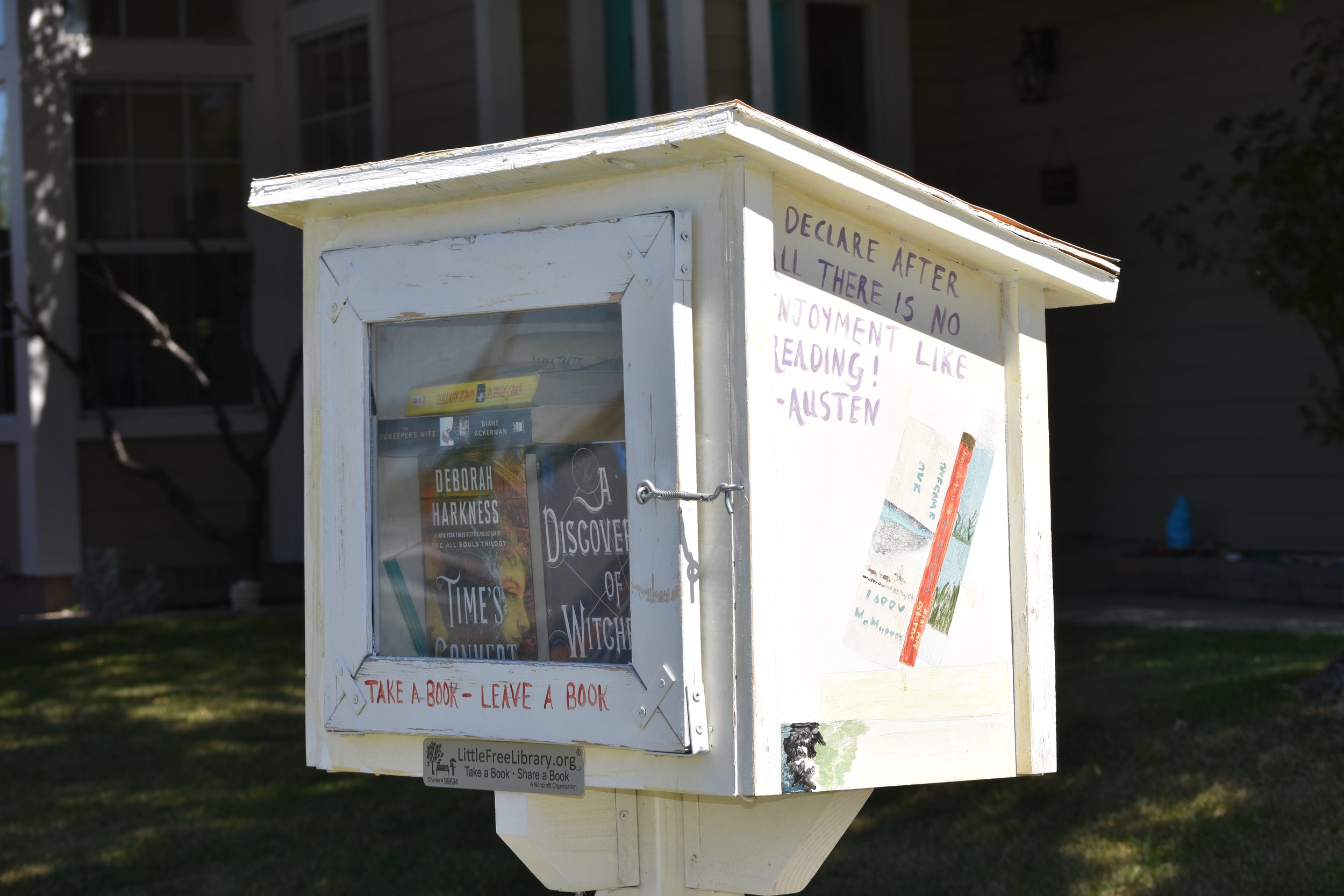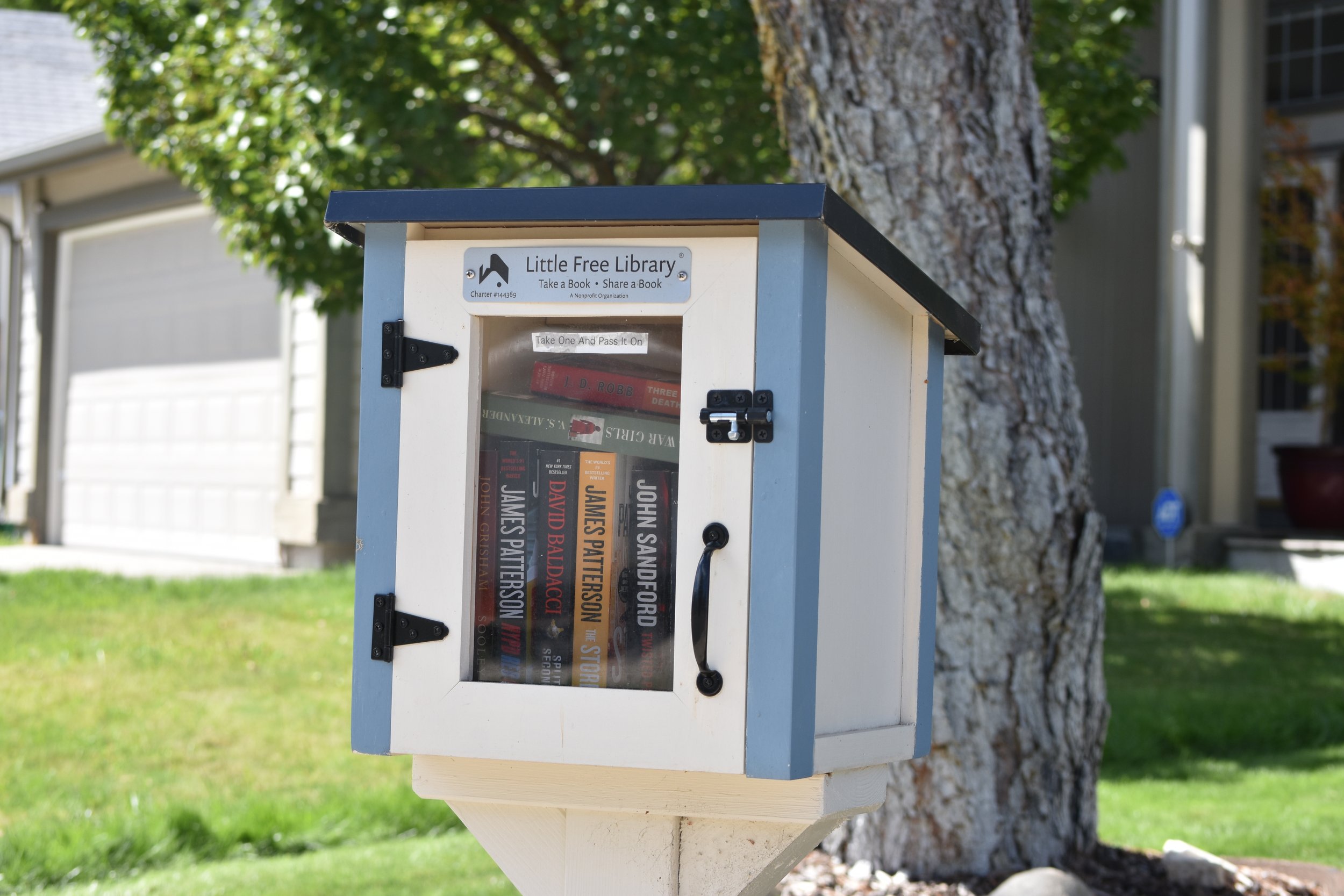It’s a bright and cheerful Tuesday morning. I am taking my husky for a walk (or rather she is taking me for a walk) around my neighborhood as I do every single day.
Today, I choose to take a different route and walk around a part of the neighborhood I haven’t been through before.
As I wander past row after row of almost identical looking houses, one in particular stands out to me. It has a small white box perched on its front lawn, painted with brightly-colored birds and flowers. At first, I think it’s simply a beautifully decorated mailbox, but upon closer inspection, I realize it is filled with books. Books that are free for the taking. It’s yet another community library in Reno, operating on a take one leave one basis.
A quick Google search reveals that this registered Little Free Library is one of 50 in the local area, and one of over 100,000 around the globe. They are springing up everywhere. On street corners and front lawns. Schools, parks, hospitals, and community centers.
Little Free Library is a non-profit organization based in Minnesota. Its mission is clear: to be a catalyst for building community, inspiring readers, and expanding book access for all, through a global network of volunteer-led Little Free Libraries. They believe that all people are empowered when the opportunity to discover a personally relevant book is not limited by time, space, or privilege.
Essentially anybody can open a Little Free Library. Their website gives you the option to buy a pre-made kit for your own book-sharing box. You buy it, they ship it. All you need to do is assemble and decorate it, and finally place the registered library on your front lawn. Or there is the option to build your own from scratch, giving you the creative freedom to make it as large, ornate, and whacky as you wish.
But apart from being fun and novelty little houses for books, why do these Little Free Libraries even matter? And, specifically, why do they matter in our community?
Little Free Libraries’ website stresses that the United States is currently facing a growing literacy crisis. Today, in the U.S., more than 30 million adults cannot read or write above a third-grade level. Repeated studies have shown that books in the hands of children have a highly meaningful impact on improving literacy – the more books available in or near the home, the more likely a child will learn and enjoy reading. However, two-thirds of children living in poverty have no books to call their own.
According to a 2020 article published by Sierra Nevada Ally, Nevada is facing its own literacy crisis. Approximately two-thirds of Nevada’s school-age children score below a basic level of reading proficiency, and Nevada is rated in the bottom half of states in reading achievement for grades 4 and 8 by the National Assessment of Educational Progress. This achievement gap exists within all subgroups of students, but it particularly affects disadvantaged students; those from low-income households and neighborhoods. Little Free Libraries could potentially help solve the literacy crisis in Nevada, by playing a key role in providing 24/7 access to books in areas of Reno where books are scarce.
It seems that Reno locals have really jumped on this new movement, and book-sharing boxes can be found all over town. Local bookstore Grassroots Books has been a great supporter of the Little Free Libraries in town, hosting fill-a-bag book sales where LFL owners can restock their boxes inexpensively.
Little Free Libraries have various programs through which they grant no-cost book-sharing boxes already filled with books to underserved, urban, suburban, rural, and Indigenous communities. Their website (www.littlefreelibrary.org) has plenty of information on such programs, as well as information on how to build and set-up your own library. They also have a very useful interactive map which details the locations of all the Little Free Libraries in your area, including street addresses and photos of the boxes.




